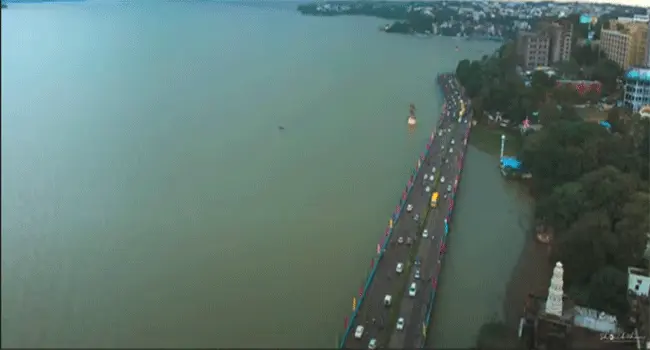
Bhopal
Bhopal, known as the City of Lakes is a fascinating amalgam of scenic beauty, an old historic city, and modern urban planning. It is the 11th-century city of Bhojpal, founded by Raja Bhoj, but the present city was established by an Afghan soldier, Dost Mohammed (1707-1740). His descendants built Bhopal into a beautiful city.
The two lakes of Bhopal are the nucleus of this grand old city. The growth of the city could be well seen from the monuments that bordering along the shores of these two lakes. Bhopal today presents a multi-faceted profile; the old city with its marketplaces and fine old mosques and palaces still bears the aristocratic imprint of its former rulers, among them the succession of powerful Begums who ruled Bhopal from 1819 to 1926. Equally impressive is the new city with its verdant, exquisitely laid out parks and gardens, broad avenues, and streamlined modern edifices. It is greener and cleaner than most cities in the country.
Upper Lake and Lower Lake the nucleus of Bhopal
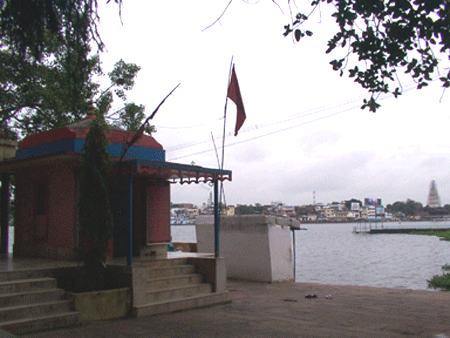 The lake was built by the late Parmar king Bhoj a thousand years ago and is known as Upper Lake. The Upper lake is divided from the Lower by an over bridge and is six sq. km. in area. There are facilities for exciting trips by sail, paddle, and motorboats. The history of Lower Lake is about two hundred years old. This was built by Chote Khan, A minister in the kingdom of Nabab Hayat Mohd Khan in the year 1794. [Nawab Hayat Muhammad Khan Bahadur (1736-1807); ruled from 1777 to 1807.] Before the construction of this lake, there were many wells, which were used to draw water for agricultural and other purposes. But after the construction of the tank, all wells merged in this lake. The smaller lake is spread over an area of 7.99 square kilometers. A Century and a half ago the tank was a maximum of 11.7 meters and a minimum of 6.16 meters deep.
The lake was built by the late Parmar king Bhoj a thousand years ago and is known as Upper Lake. The Upper lake is divided from the Lower by an over bridge and is six sq. km. in area. There are facilities for exciting trips by sail, paddle, and motorboats. The history of Lower Lake is about two hundred years old. This was built by Chote Khan, A minister in the kingdom of Nabab Hayat Mohd Khan in the year 1794. [Nawab Hayat Muhammad Khan Bahadur (1736-1807); ruled from 1777 to 1807.] Before the construction of this lake, there were many wells, which were used to draw water for agricultural and other purposes. But after the construction of the tank, all wells merged in this lake. The smaller lake is spread over an area of 7.99 square kilometers. A Century and a half ago the tank was a maximum of 11.7 meters and a minimum of 6.16 meters deep.
Bhopal, the Dynasties that ruled.
Several dynasties have left their mark on the city. The antediluvian remains of the forts built by the Rajputs, Afghans, and Moguls silently speak of the battles, victories, and failures of the past era. These icons are testimony to the grandeur of the past and provide a marvelous treat to the eyes. Even by seeing the remains of the city, one can have a glimpse of different cultures that existed in the past. The most notable, bold, revolutionary, and people-loving ruler was Lady Qudia, daughter of the then-ruler Ghaus Mohammad Khan and Begum Zeenat.
Qudsia Begum and Nawab Jahangir
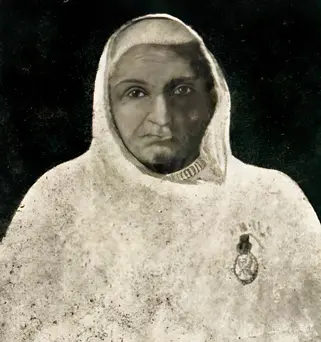 In 1819, 18-year-old Qudsia Begum (also known as Gohar Begum) took over the reins after the assassination of her husband Nazar Mohammad Khan. She was the first female ruler of Bhopal. Although she was illiterate, she was brave and refused to follow the Purdah tradition. She declared that her 2-year-old daughter Sikander would follow her as the ruler. None of the male family members dared to challenge her decision. She cared very well for her subjects and took her dinners only after receiving the news every night that all her subjects had taken meals. She built the Jama Masjid (mosque) and her beautiful palace the 'Gohar Mahal'(also called Nazar Bagh) in Bhopal. She ruled till 1837 and by then she had groomed her only daughter Sikandar Begum to assume full executive power for ruling the state.
In 1819, 18-year-old Qudsia Begum (also known as Gohar Begum) took over the reins after the assassination of her husband Nazar Mohammad Khan. She was the first female ruler of Bhopal. Although she was illiterate, she was brave and refused to follow the Purdah tradition. She declared that her 2-year-old daughter Sikander would follow her as the ruler. None of the male family members dared to challenge her decision. She cared very well for her subjects and took her dinners only after receiving the news every night that all her subjects had taken meals. She built the Jama Masjid (mosque) and her beautiful palace the 'Gohar Mahal'(also called Nazar Bagh) in Bhopal. She ruled till 1837 and by then she had groomed her only daughter Sikandar Begum to assume full executive power for ruling the state.
Begum Sikandar’s husband Jahangir Muhammad Khan became the ruler of the state because of the treaty with Begum Qudsla. The new Nawab Jahangir, who was a poet-philanderer, changed the atmosphere of the palace with courtesans, dancing girls, wine, and merriment. He had built a new suburb and named it after him as Jahangirabad where he had built a palace for himself away from Gohar Mahal the palace where he was brought up.
Sri Rai Chalanlal who is a regular visitor to the Hanuman temple near the old palace, was finding it difficult to make the trip to the temple every day. He thought it was better to request the Nawab for a place to build a temple for Sri Hanuman in Jahangirabad itself so that he could offer his prayers to his Devatha daily.
Sri Rai Chalanlal
Rai Chalanlal a royal noble who was serving the rulers of the day was an ardent devotee of Sri Hanuman. He had not missed visiting the temple of Sri Hanuman any day. Since Gohar Mahal was serving as the Raj Mahal, this noble was also living nearby and visited the Hanuman temple near Gohar Mahal. [It is said that the then Hanuman temple was near the present Taj Mahal]. With the new Nawab Jahangir coming to power and building his township Jahangirabad, this noble had to move to Jahangirabad.
Daily visit to Hanuman temple
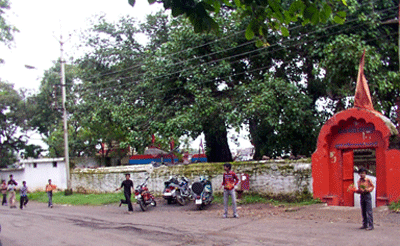 Sri Rai Chalanlal who is a regular visitor to the Hanuman temple near the old palace, was finding it difficult to make the trip to the temple every day. Since the distance between Jahangirabad and Shajahanabad [present name] is long the noble could make it only on Tuesdays and Saturdays of the week. He was uneasy with this arrangement and felt as if he was missing something. He thought it was better to request the Nawab for a place to build a temple for Sri Hanuman in Jahangirabad itself so that he could offer his prayers to his Devatha daily.
Sri Rai Chalanlal who is a regular visitor to the Hanuman temple near the old palace, was finding it difficult to make the trip to the temple every day. Since the distance between Jahangirabad and Shajahanabad [present name] is long the noble could make it only on Tuesdays and Saturdays of the week. He was uneasy with this arrangement and felt as if he was missing something. He thought it was better to request the Nawab for a place to build a temple for Sri Hanuman in Jahangirabad itself so that he could offer his prayers to his Devatha daily.
Allotment of place by Nawab
He mustered courage and requested for land to be allotted for the construction of a temple for Sri Hanuman. Nawab told him to select the place and accordingly, Sri Rai Chalanlal, the noble of the royal court zeroed down a site near Lower Lake. Nawab Jahangir Muhammad Khan then allotted the place for building a Mandir for Sri Hanuman.
Sri Hanuman Mandir of Khatlapura
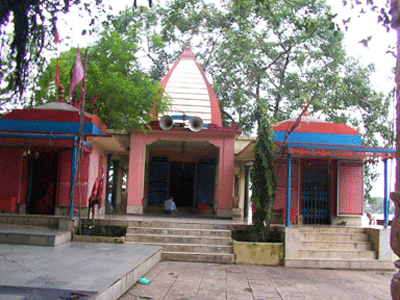 Sri Rai Chalanlal the devotee of Sri Hanuman built a temple for the deity at the selected place, presently known as Khatlapura near Lower Lake. In the year 1840 pranapradista of the deity was performed and a grand ceremony followed this with special pooja and bhajan.
Sri Rai Chalanlal the devotee of Sri Hanuman built a temple for the deity at the selected place, presently known as Khatlapura near Lower Lake. In the year 1840 pranapradista of the deity was performed and a grand ceremony followed this with special pooja and bhajan.
From that time onwards people from all walks of life used to visit this mandir and seek the blessings of Sri Hanuman. With the lower lake forming the background for the temple, devotees come here to meditate upon the deity since the atmosphere here is cool, pleasant, and calm.
Sri Hanuman of Khatlapura, Jahangirabad
Sri Hanuman of Khatlapura, Jahangirabad, in ardha shila roop is facing east, while the mandir door is facing north. Sri Hanuman is holding gadha in His left hand which is in resting position. He is bestowing fearlessness and other noble things that are being sought by the devotee with His right hand in ‘abhya mudra’. A simple visit to this temple in the serene surroundings will make the devotee relax the mind and bring internal peace. AUM Santhi! AUM Santhi! AUM Santhi!
Location of the temple: "Sri Hanuman Mandir, Khatlapura, Jahangirabad, Bhopal"
Experience
A simple visit to this temple in the serene surroundings will make the devotee relax the mind and bring internal peace. AUM Santhi! AUM Santhi! AUM Santhi!
SRI HANUMAN THINKS DIFFERENTLY, THINKS FAST
THINKS AHEAD AND ACTS FOR SURE
Ed [June 2021]
Updates: [Jan 2025]
* author is working in Madhya Pradesh Police
